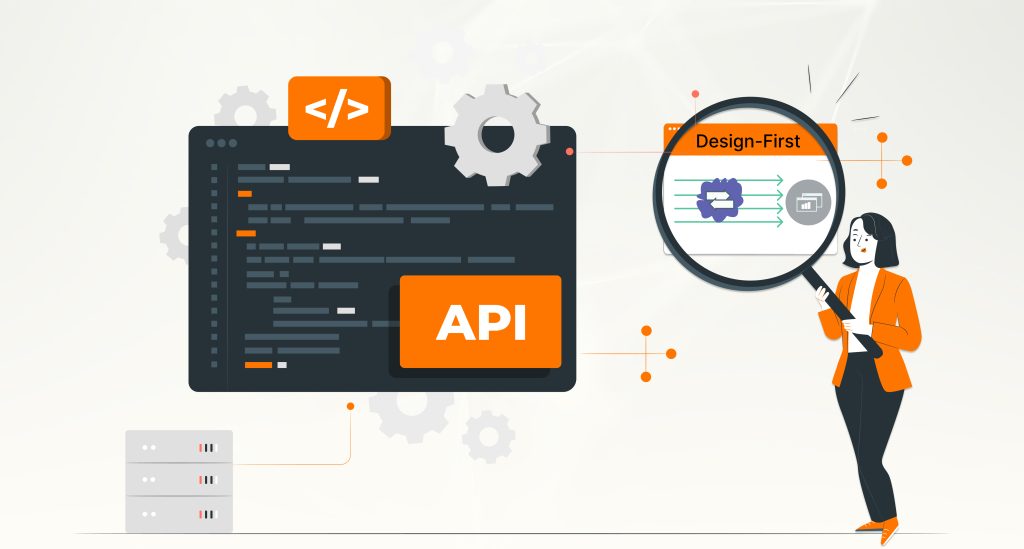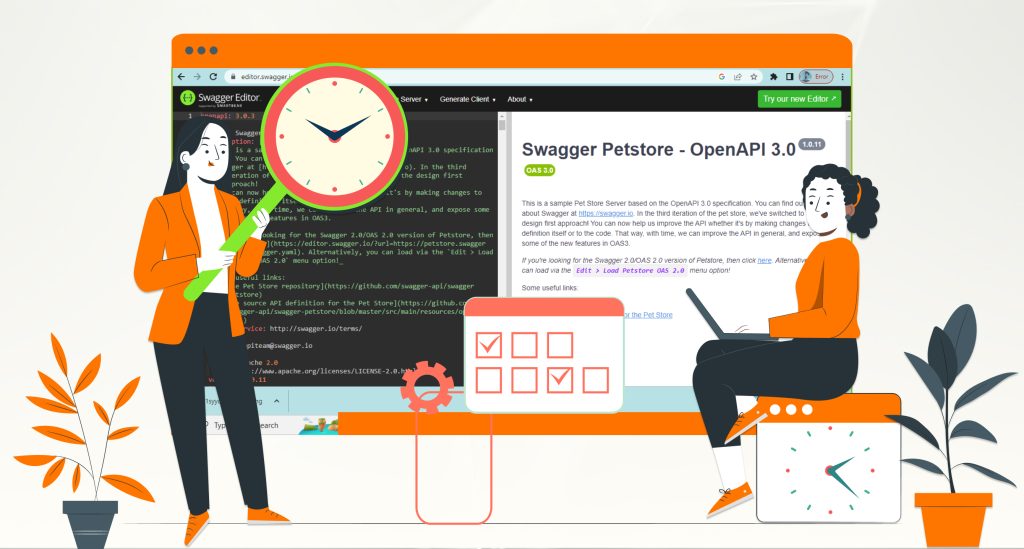The OpenAPI Specification (OAS) defines a standard, language-agnostic interface to RESTful APIs which allows both humans and computers to discover and understand the capabilities of the service without access to source code, documentation, or through network traffic inspection. Open API Specification Provides understanding of how an API behaves and Links with other API’s. Specification is largely about the design of an API. This is Developer/Consumer comes to know how to frame a request and how to get back the response. API design and functionality are key factors while choosing to integrate an API with an application.
Open API Life Cycle

Benefits Of Using OpenAPI / Swagger
Various benefits of using Open APIs are listed below:
- Design-First – With Open API Specification one can define the whole API with types and examples for every endpoint before starting the implementing. With tools that generate mock-APIs, we can verify that everything looks the way we intended. We can refine our API design by simply iterating over the specification document.

2. Collaborate on API Design – An API is a contract that all parties, servers and clients, need to follow in an exact manner and changing such a contract is always difficult. This makes the design stage of an API very important and multiple stakeholders should be involved in it. As a result, the ability to collaborate on API development smoothly is of utmost importance, to ensure consistency and efficiency.
OpenAPI definitions, like other spec formats, are formalized plain-text documents that can reside in a repository, e.g. on GitHub, just like code. Therefore, they can be collaborated on, by using means such as issue trackers, forks and pull requests. Developers who are already comfortable using these tools to collaborate on code will feel right at home using the same tools for the OpenAPI specification as well.
As a result, one can enjoy the structured approach that versioning systems like Git enforce, and documented history of the design phase. Definitions can even reside in the same repository as their implementation. This ensures documentation and implementation are linked, and automated continuous integration (CI) processes can keep everything in sync.

3. Time saving and prevents deduplication – Writing code always takes time, there is quite a good chance that bugs creep in and some parts of it may admittedly be boring boilerplate code. This not only causes errors, it also makes work meticulous for developers. This can be avoided with OpenAPI. Standard or customized tool chains, for example built around swagger, can convert OpenAPI definitions into code, saving time and effort.

4. Quality Assurance – An OpenAPI definition is machine-readable and, if we follow an API design workflow, it becomes the single source of truth of our API. This means that every part of our system can be tested against the specification. API definitions can be imported into clients like Postman for manual testing.
In larger API deployments, an API gateway running in front of an API implementation could inspect incoming and outgoing traffic to determine whether it conforms with the specification. We can use OpenAPI definitions not only for our own APIs but also to assess third party APIs that we consume. This ensures our APIs are always up to standard, reducing the risks of product malfunction.

5. Interactive Documentation – Even with all types of automation, good documentation for humans is still an important part of every API, because in the end it’s human developers who have to write and understand the business logic that calls the API. On top of that, documentation also serves the purpose of attracting developers. Developers like to play with interactive documentation that allows users to immediately test the API operations..
One of the interactive tools is SwaggerUI, was the first tool to offer API documentation with integrated test client, so developers could see a list of available API operations and quickly send a request in their browser to test how the API responds before writing any code of their own.


